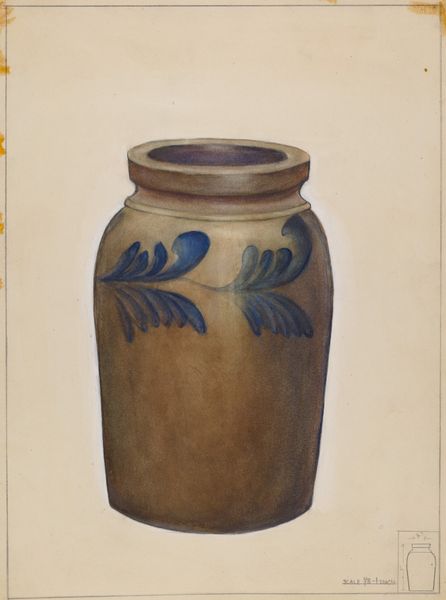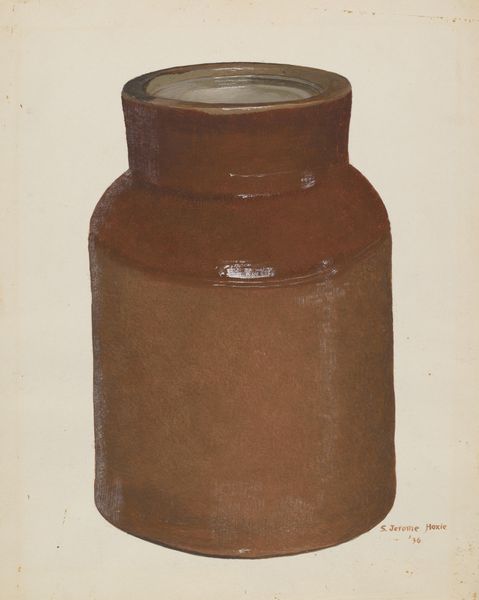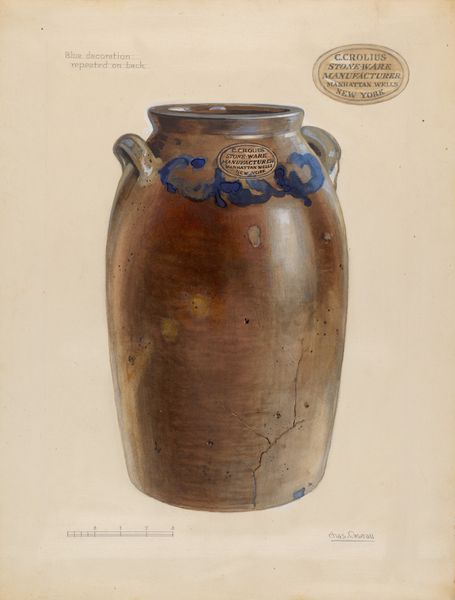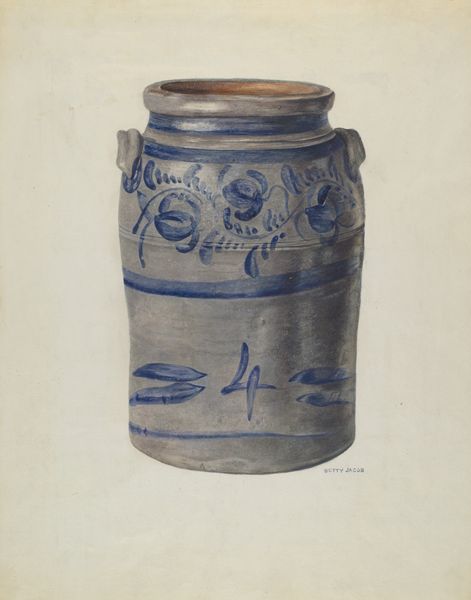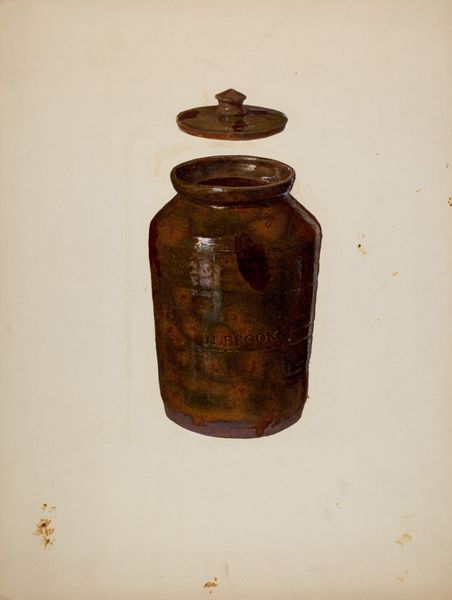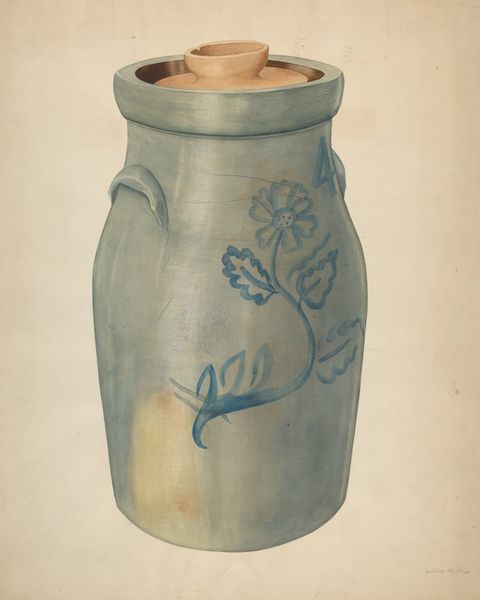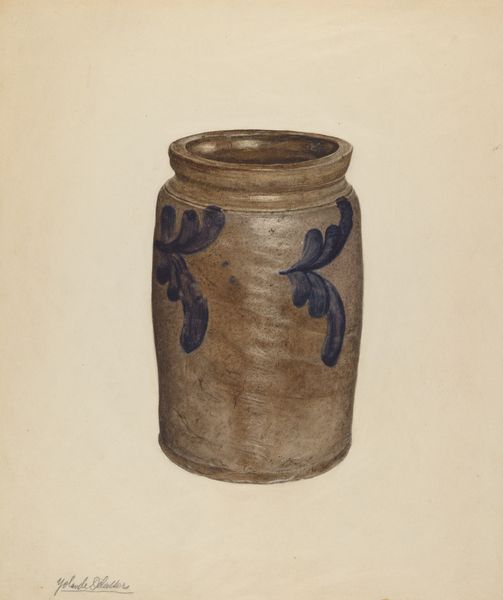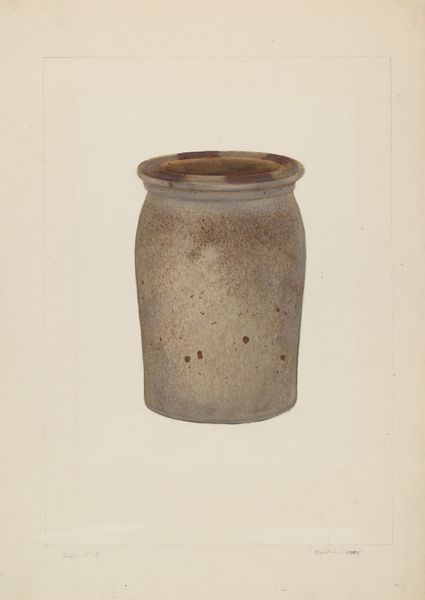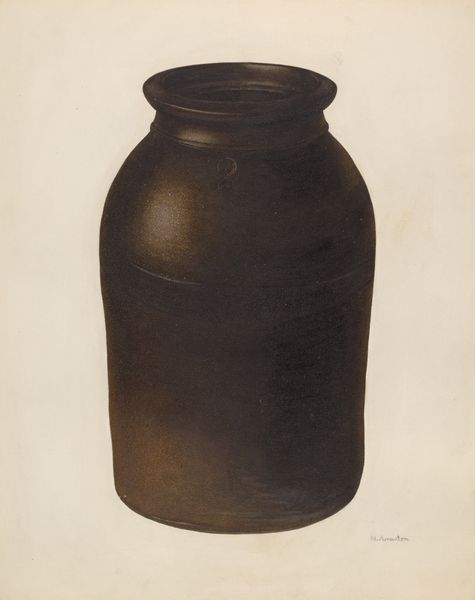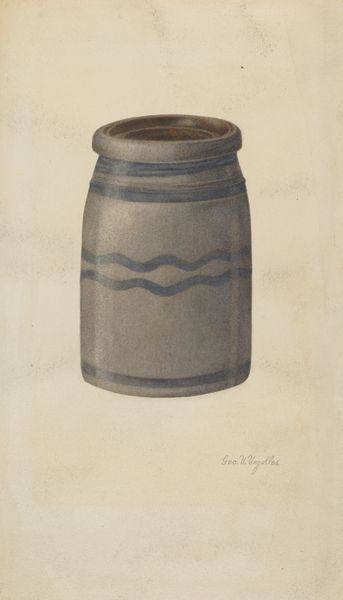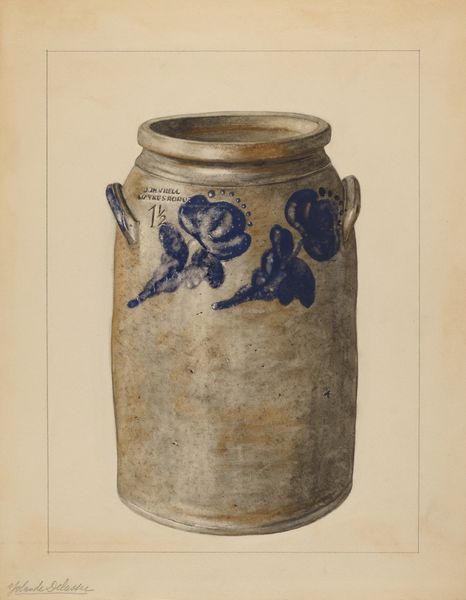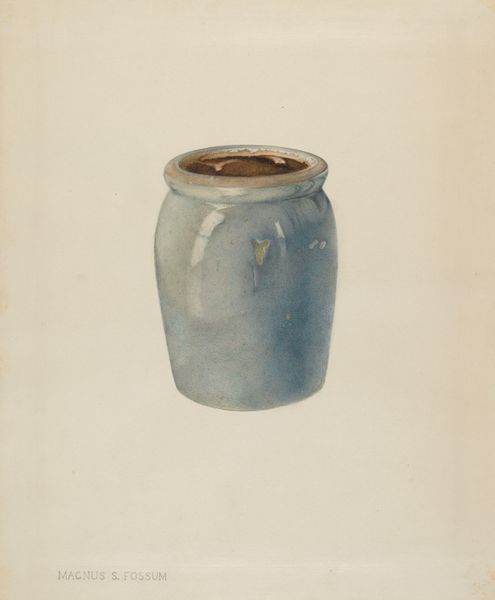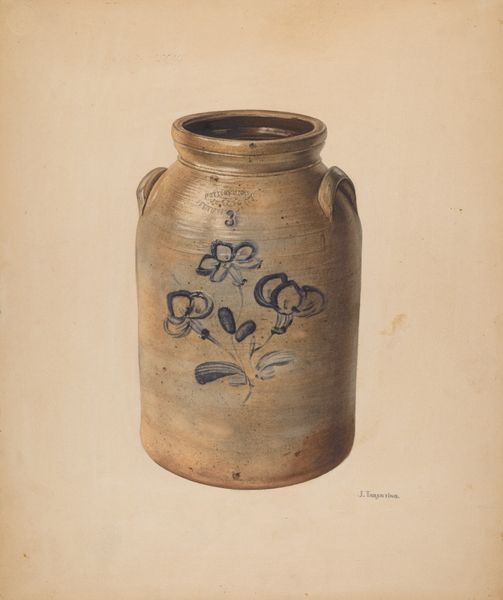
drawing, ceramic, watercolor
#
drawing
#
water colours
#
pottery
#
ceramic
#
oil painting
#
watercolor
#
stoneware
#
watercolor
#
realism
Dimensions: overall: 45.8 x 35.3 cm (18 1/16 x 13 7/8 in.)
Copyright: National Gallery of Art: CC0 1.0
Curator: Arthur G. Merkley's watercolor of a "Stone Storage Jar," created sometime between 1935 and 1942. It has a kind of melancholy about it, wouldn't you say? Editor: Melancholy is a good word. It’s austere, almost solemn, in its presentation. The single jar, centered. The palette is muted, primarily blues and grays. I’m immediately curious about what stories this object holds. Curator: Exactly! There's something so deeply personal about depicting such an everyday object. This isn't a grand landscape or a portrait of royalty; it’s a simple jar, likely found in someone’s home, in their kitchen. What was its function in the household? Who used it? The texture suggests that it must have held an abundance of food at some point. What meaning did that all have to the artist? Editor: It brings to mind notions of preservation—both of food and memory. Consider the social context: the 1930s were marked by economic depression, scarcity, and immense labor organizing to create the infrastructure and resources people depend on to subsist. This jar likely was a vessel for community. And Merkley documented its beauty with incredible focus. The subtle rendering of the fading glaze suggests how everyday work and resources require careful cultivation, and, moreover, may pass away, like these colors, despite our best efforts to hold onto them. Curator: And did they make it from local clay, baked in local kilns? There is something so evocative and elemental here; so wonderfully real! It does not depict perfection or a heroic idea; rather it embraces reality, including age, chips and discoloration. I appreciate that refusal to shy away from authenticity, don't you? Editor: Definitely! Its imperfections—the mark along the side, the aged glaze, all invite inquiry and reveal use, time and relationships. They speak to the politics of working-class lives, too frequently invisible. And they compel me to look closer, to learn what stories it has to tell about the human experience. What do you take away? Curator: I am grateful. Here it is, in a museum setting; how wonderful that Merkley's delicate rendering of something we would now throw away allows its story to echo into eternity, asking viewers of every generation to stop and reflect on its origin and implications.
Comments
No comments
Be the first to comment and join the conversation on the ultimate creative platform.
